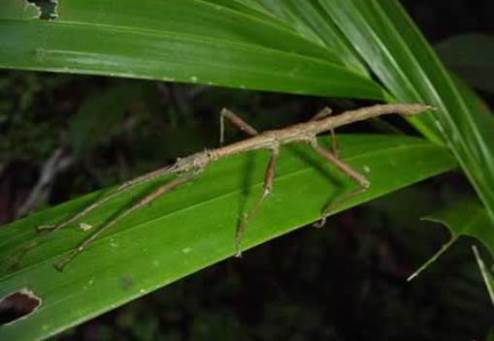The International Union for Conservation of Nature (IUCN)—the global authority on the status of the natural world—estimates that approximately 5–10% of the world's insect species (class Insecta, phylum Arthropoda) are threatened and facing extinction. However, other independent investigators have concluded that the actual number may be as high as 40%. Although the severe loss of insects is happening on a global scale, insect species found on the island of Puerto Rico in the Caribbean Sea are experiencing particularly greater survival hardships. Specifically, insect populations on Puerto Rico have plummeted dramatically since the 1970s, with certain locations confronting reductions of up to 98% of all ground insects and 80% of insects inhabiting the leaf canopies of tropical rainforest trees. See also: Economic entomology; Endangered species; Extinction; Insecta; Island biogeography; Population viability; Rainforest

Scientists have pointed to global climate change as the chief factor responsible for the insect depletion on Puerto Rico. Average temperatures have increased by 2°C (3.6°F) on the island since the late 1970s. Insects and other arthropods (including centipedes and spiders) are particularly sensitive to shifts in temperature, and many species have struggled to adapt to the changing conditions. As a result, these seemingly small increases in temperature have triggered substantial reductions in the abundance and physiological fitness of numerous insect species. In particular, investigators have determined that the elevated metabolic rates required by tropical insects to adjust to increasing temperatures have precipitated a 20% reduction in insect population growth on Puerto Rico. The investigators are alarmed by this statistic and are predicting, over time, more detrimental effects of climate warming trends on the functional capacity of insects to exist there. See also: Adaptation (biology); Adaptive responses in animals to climate change; Global climate change; Global warming; Insect physiology; Physiological ecology (animal); Temperature; Temperature adaptation in animals
The disappearance of many of the formerly thriving insect populations on Puerto Rico is also causing ripple effects, especially with regard to animal species that feed on insects. For example, frogs and anole lizards, which are natural predators of insects, have experienced abundance losses of 50% in certain locations. In addition, many insectivorous birds have sustained similar reductions in population; in particular, the population of the native Puerto Rican tody (a small, brilliant-green bird) inhabiting El Yunque National Forest (the only tropical rainforest in the national forest system of the United States) has declined by 90%. Taken together, the losses of both prey (in this case, insects) and predators (for example, lizards, frogs, and birds) are disrupting complex food webs and destroying the intricate balance necessary to sustain ecosystems, which will certainly affect other ecological communities (including those involving humans) found on the island of Puerto Rico. See also: Ecological communities; Ecosystem; Food web; Predator-prey interactions





